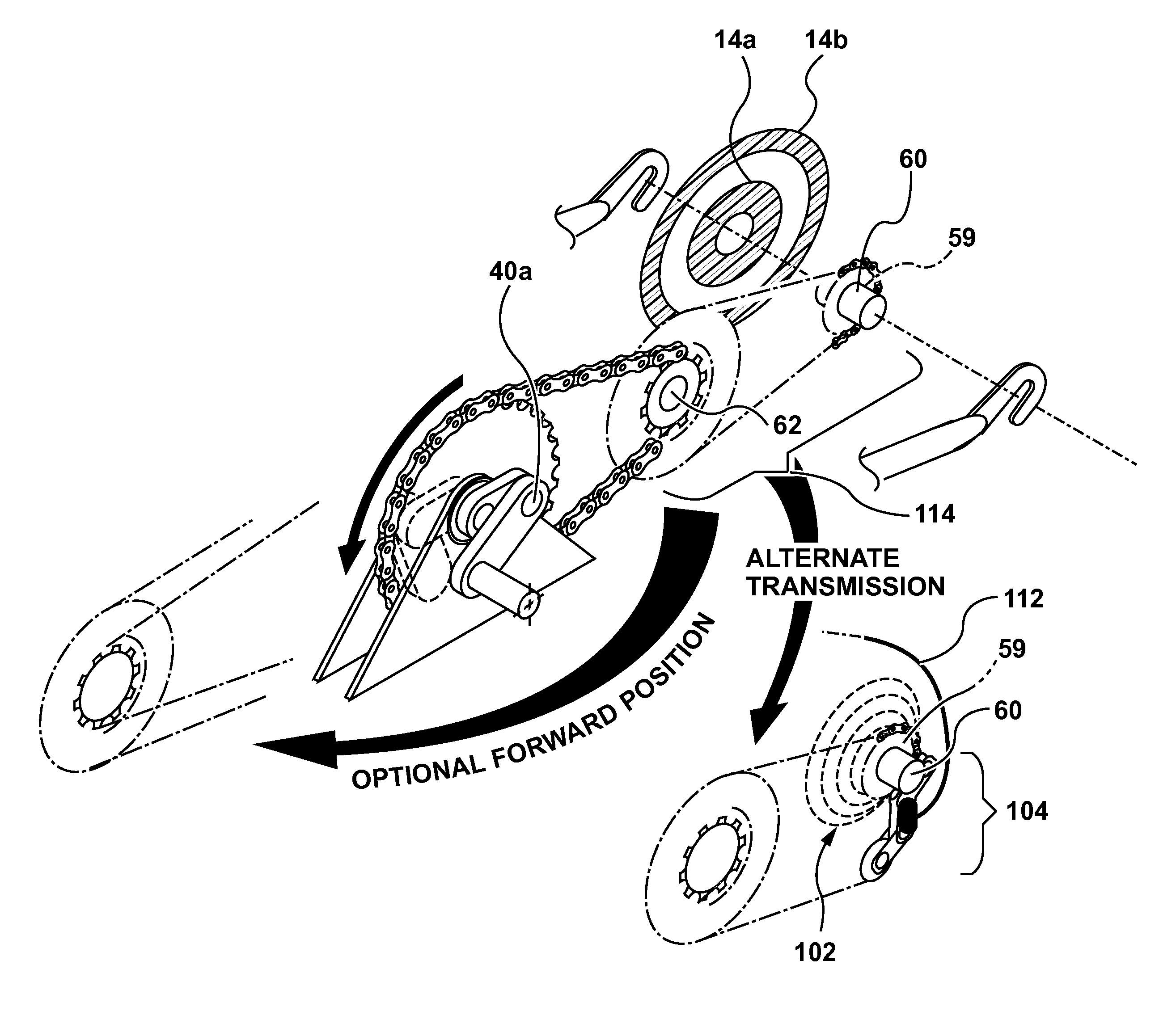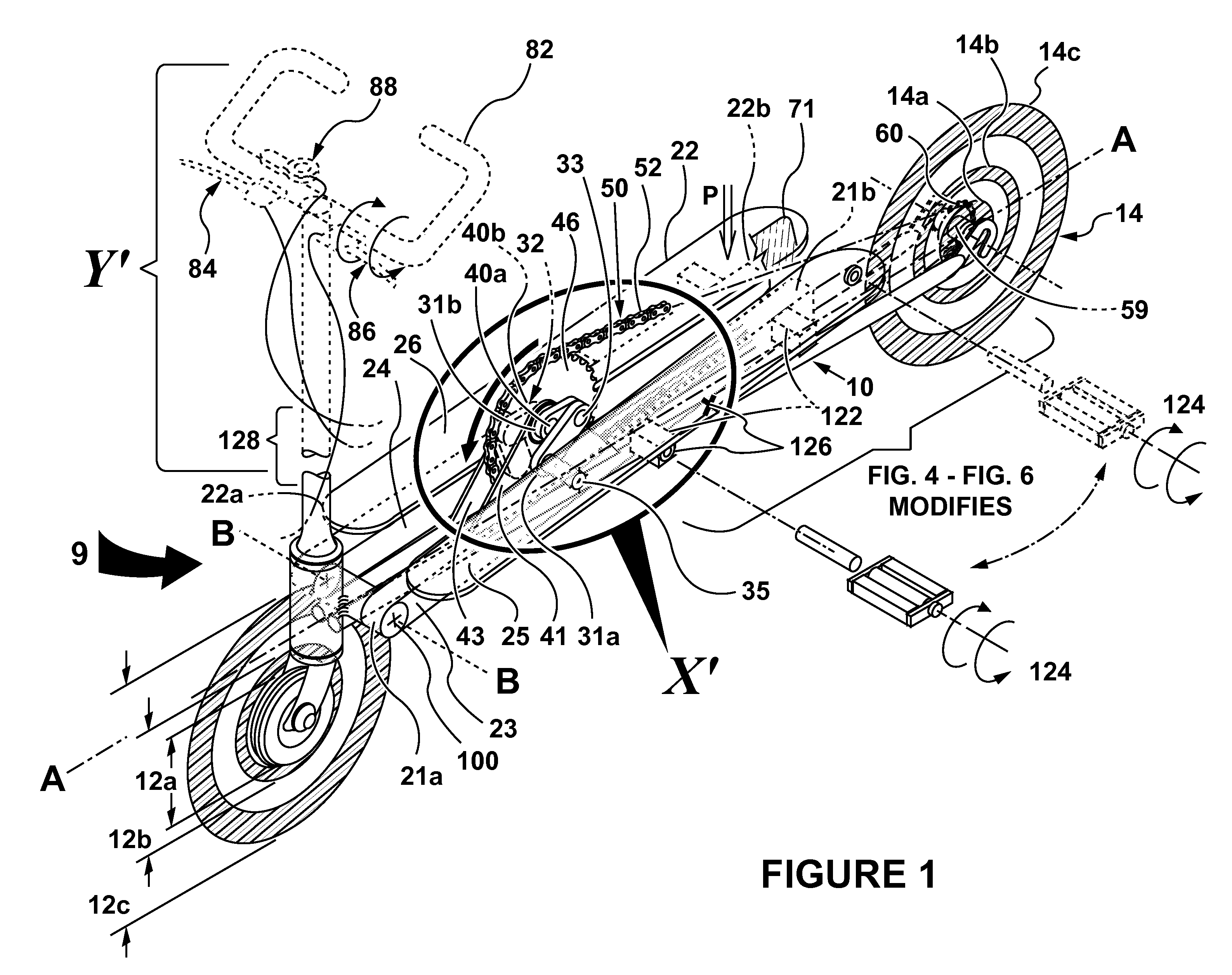Pedal-drive system for manually propelling multi-wheeled cycles
a multi-wheeled cycle and pedal drive technology, which is applied in the direction of pedals, cycles, transportation and packaging, etc., can solve the problems of inability to meet the user's needs, inability to adjust the pedal, and the above described linear drive nature of the cable and chain recoil one-way clutch drive, so as to reduce the cost of manufacturing and assembly, reduce the weight and cost of production, and facilitate the effect of repair or replacemen
- Summary
- Abstract
- Description
- Claims
- Application Information
AI Technical Summary
Benefits of technology
Problems solved by technology
Method used
Image
Examples
Embodiment Construction
[0054]In describing the preferred embodiments illustrated in the drawings and summarized above, specific terminology shall be resorted to for sake of clarity. However, it is not intended to be limited to the specific terms so selected and it is to be understood that each specific term includes all technical equivalents which operate in a similar manner to accomplish a similar purpose.
[0055]Noting FIG. 1 through FIG. 12, particularly FIG. 1 and FIG. 2, a pedal drive system 9 for propelling a multi-wheeled cycle is disclosed, comprising a handle assembly Y′ including a handle bar 82, possible handle hinge area 128 whereat or where near the area a hinge may be included, a first brake assembly 84, a second brake assembly 86 and a gear switch assembly 88. Note said drive system 9 having a hingable seat assembly Z′ including a seat 94, and a seat extension hinge 96. The said pedal drive system 9 further has a cycle frame 10 having frame axis A-A and proximal hinge axis B-B near the steera...
PUM
 Login to View More
Login to View More Abstract
Description
Claims
Application Information
 Login to View More
Login to View More - R&D
- Intellectual Property
- Life Sciences
- Materials
- Tech Scout
- Unparalleled Data Quality
- Higher Quality Content
- 60% Fewer Hallucinations
Browse by: Latest US Patents, China's latest patents, Technical Efficacy Thesaurus, Application Domain, Technology Topic, Popular Technical Reports.
© 2025 PatSnap. All rights reserved.Legal|Privacy policy|Modern Slavery Act Transparency Statement|Sitemap|About US| Contact US: help@patsnap.com



